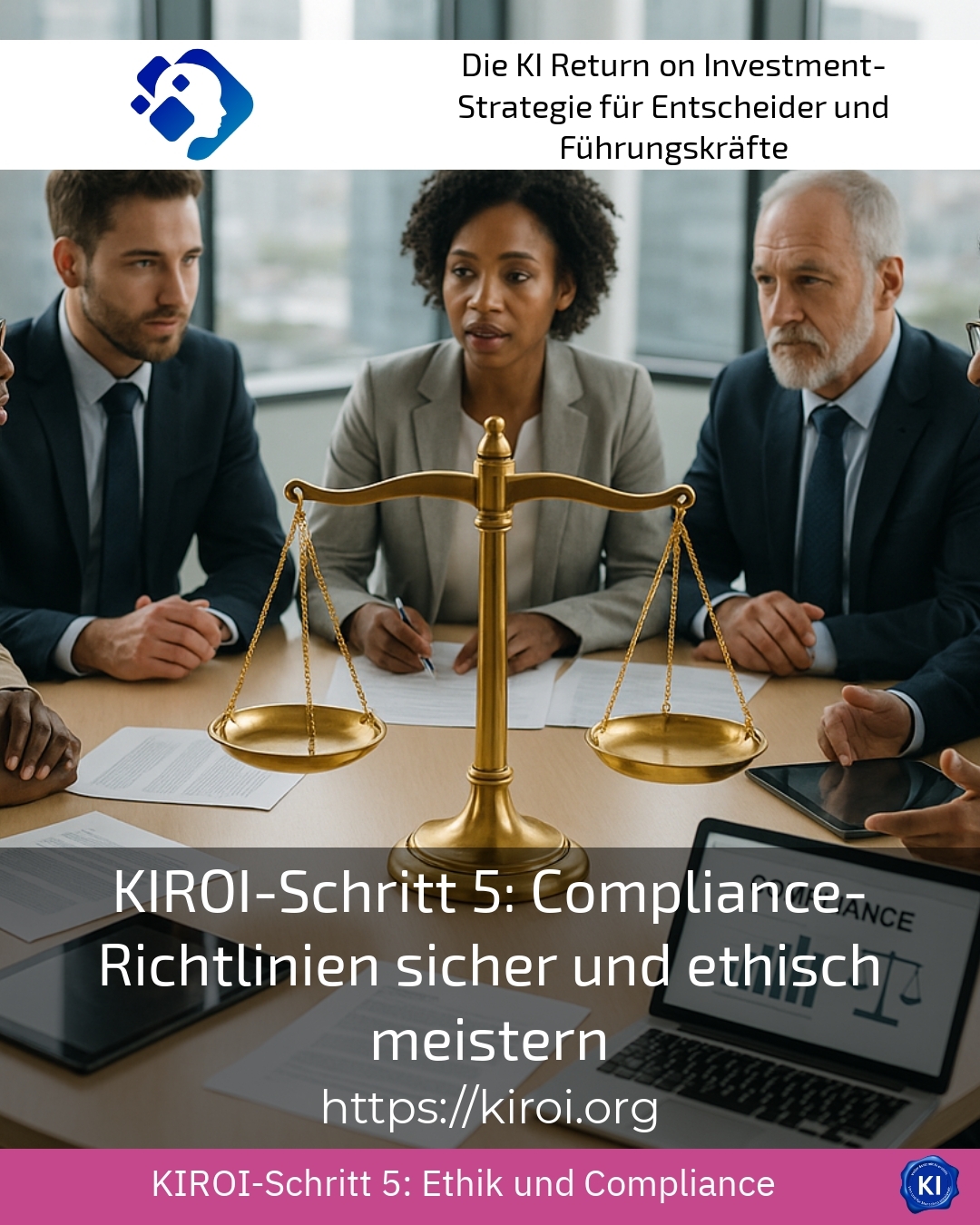Mastering compliance guidelines safely and ethically
Compliance guidelines are essential today to protect companies from legal risks and at the same time promote an ethically responsible corporate culture. Especially in a complex corporate environment, many employees and managers experience challenges when it comes to not only complying with these guidelines, but actively living them. This chapter provides guidance on how to master compliance guidelines safely and sustainably. We show practical examples and provide inspiration on how companies from different sectors can successfully organise their compliance processes.
The importance of compliance guidelines in corporate practice
Compliance guidelines serve as a binding framework for all company activities. They ensure that processes comply with the law and are transparent and that fraud, corruption and unethical behaviour are avoided. For example, a company in the financial sector helps to prevent money laundering through clearly defined compliance guidelines by carefully checking all customer data and strictly adhering to reporting obligations.
A manufacturer in the chemical industry, on the other hand, establishes compliance guidelines for occupational health and safety and environmental protection. As a result, the company reduces the risk of accidents and avoids expensive fines, while at the same time demonstrating social responsibility.
Compliance guidelines are also essential in the IT services sector in order to comply with data protection regulations such as the GDPR and to manage customer data securely. In this way, the company not only protects its customers, but also strengthens the trust of its partners and investors.
Creating transparency through clear communication
A key success factor in the implementation of compliance guidelines is clear communication at all levels of the company. Employees must understand what is expected of them and what the consequences of non-compliance can be. Companies in the logistics sector, for example, regularly inform their drivers about driving and safety regulations so that all processes are legally compliant and accidents are avoided.
A medium-sized consulting firm also relies on comprehensible and easily accessible guidelines on the intranet as well as regular workshops to anchor the compliance culture in the team. Such regular dialogue formats provide space for questions and encourage everyone to adhere to the rules and regulations.
BEST PRACTICE with one customer (name hidden due to NDA contract) A digital platform was introduced in a manufacturing company that allows employees to view compliance guidelines and access training content at any time. Reports show that this has led to a significant reduction in violations and compliance has become an integral part of the corporate culture.
Training and sensitisation as a driver for compliance
Regular training sessions help employees to implement compliance guidelines safely and ethically. In this way, a pharmaceutical company sensitises its research teams not only to legal requirements, but also to ethical standards in clinical trials. This contributes to credibility and the protection of patients.
In the catering industry, on the other hand, companies regularly train their employees on hygiene guidelines and occupational health and safety. This ensures that no legal or internal rules are breached, even during stressful times.
Workshops on health and safety-related compliance guidelines are held in the construction industry to minimise accidents at work. These practical training courses help to recognise dangerous situations immediately and act correctly.
Success factor: monitoring and continuous improvement
In order for compliance guidelines to remain effective, companies must systematically monitor adherence to them. One energy supplier, for example, uses automated checks to recognise fraudulent manipulation in the billing process at an early stage. Regular internal audits ensure greater security and control.
An IT company uses KPIs to evaluate compliance performance and continuously adapts guidelines to technological or regulatory changes.
One trading company also conducts anonymous employee surveys to check the actual implementation of compliance guidelines and to identify weaknesses in behaviour and make targeted improvements.
Support from external compliance experts
Many organisations support compliance policy projects with external coaches and consultants. They offer guidance in the development of customised regulations, carry out risk assessments and provide support during implementation.
In mechanical engineering, a coach helped to critically analyse internal processes and create new, practicable rules. This made it possible to remove compliance hurdles and significantly increase acceptance among employees.
In the service sector, external experts are brought in for training courses and workshops to ensure a neutral view of processes and to introduce best practices from other industries.
My analysis
Compliance guidelines are more than just a set of rules; they are the linchpin of ethical and legally compliant corporate governance. Companies benefit from clearly communicating their guidelines, regularly training employees and systematically monitoring compliance. The following applies: compliance is a dynamic process that requires continuous adaptation to new challenges.
Practical examples from a wide range of industries show that compliance guidelines reliably help to minimise legal risks and at the same time have a positive influence on corporate culture. External support can provide useful impetus and accompany the process. With the right implementation, compliance guidelines can be mastered safely and ethically.
Further links from the text above:
[1] What are compliance guidelines - navan.com
[2] How to implement compliance guidelines effectively - dataguard.de
[3] Compliance: Definition, tasks, guidelines - personio.de
[4] Efficient policy management - eqs.com
[5] Implementing compliance in the company - ihk.de
For more information and if you have any questions, please contact Contact us or read more blog posts on the topic Artificial intelligence here.















